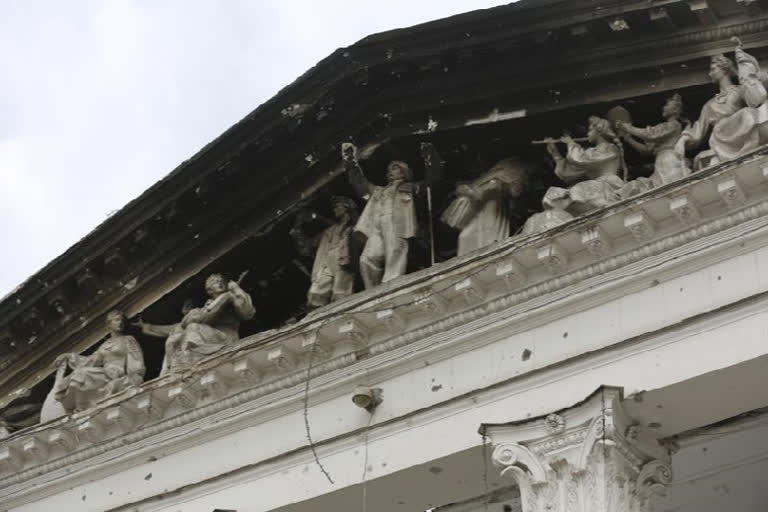Lviv (Ukraine):She stood in just her bathrobe in the freezing basement of the Mariupol theater, coated in white plaster dust shaken loose by the explosion. Her husband tugged at her to leave and begged her to cover her eyes. But she couldn’t help it — Oksana Syomina looked. And to this day, she wishes she hadn’t. Bodies were strewn everywhere, including those of children. By the main exit, a little girl lay still on the floor.
Syomina had to step on the dead to escape the building that had served as the Ukrainian city’s main bomb shelter for more than a week. The wounded screamed, as did those trying to find loved ones. Syomina, her husband and about 30 others ran blindly toward the sea and up the shore for almost five miles (eight kilometers) without stopping, the theater in ruins behind them.
“All the people are still under the rubble, because the rubble is still there — no one dug them up,” Syomina said, weeping at the memory. “This is one big mass grave.” Amid all the horrors that have unfolded in the war on Ukraine, the Russian bombing of the Donetsk Academic Regional Drama Theater in Mariupol on March 16 stands out as the single deadliest known attack against civilians to date. An Associated Press investigation has found evidence that the attack was in fact far deadlier than estimated, killing closer to 600 people inside and outside the building. That's almost double the death toll cited so far, and many survivors put the number even higher.
The AP investigation recreated what happened inside the theater on that day from the accounts of 23 survivors, rescuers, and people intimately familiar with its new life as a bomb shelter. The AP also drew on two sets of floor plans of the theater, photos and video taken inside before, during and after that day and feedback from experts who reviewed the methodology. With communications severed, people coming and going constantly, and memories blurred by trauma, an exact toll is impossible to determine. The government estimated early on that about 300 people died and has since opened a war crimes investigation, according to a document obtained by the AP.
AP journalists arrived at a much higher number through the reconstruction of a 3D model of the building's floorplan reviewed repeatedly by direct witnesses, most from within the theater, who described in detail where people were sheltering. All the witnesses said at least 100 people were at a field kitchen just outside, and none survived. They also said the rooms and hallways inside the building were packed, with about one person for every 3 square meters of free space.
